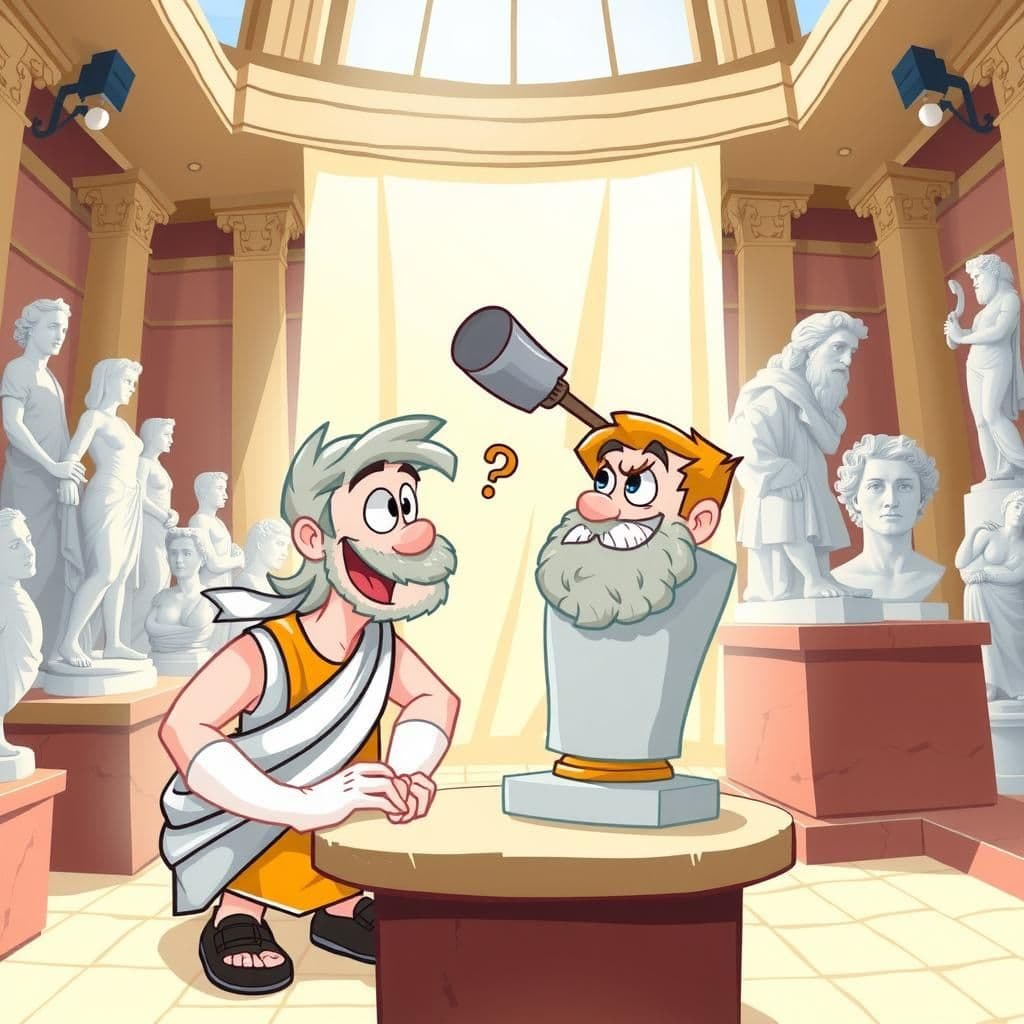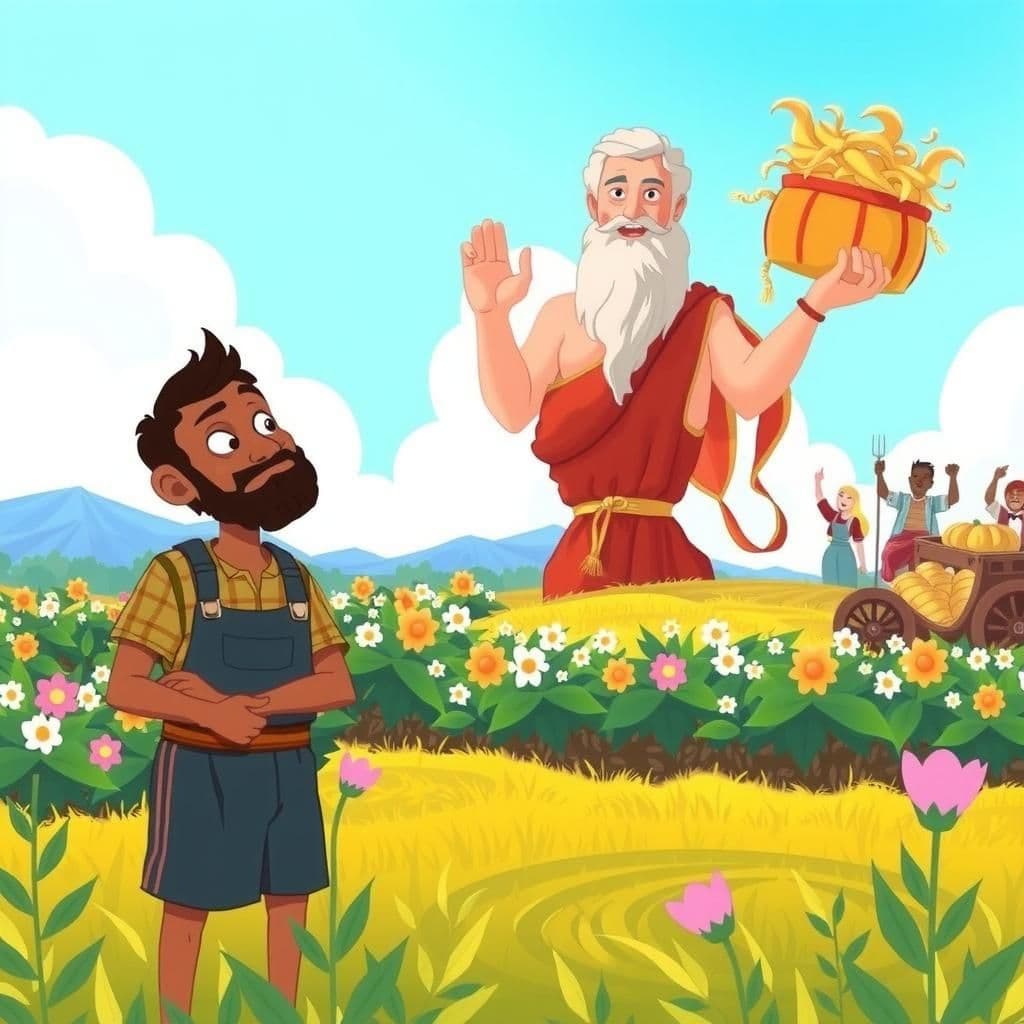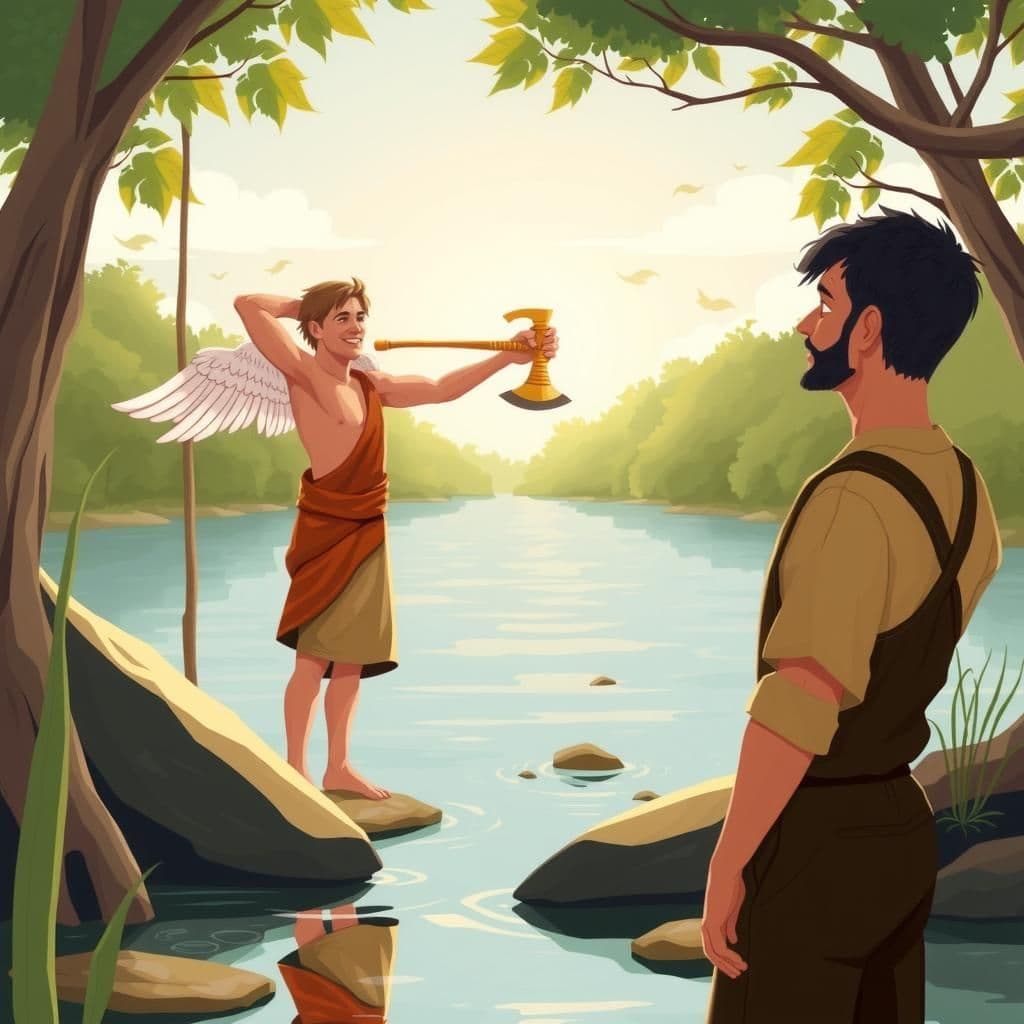Mercury and the Sculptor

Story Summary
In "Mercury and the Sculptor," Mercury, disguised as a man, visits a sculptor to assess his esteem among mortals. After inquiring about the prices of Jupiter and Juno's statues, he humorously suggests his own statue should be valued higher, only for the sculptor to quip that he'd throw it in for free if Mercury buys the other two. This concise moral story highlights the importance of humility and the sometimes inflated self-worth that can lead to humorous situations.
Mercury's Disguise
Mercury once sought to determine how he was regarded among mortals. To accomplish this, he disguised himself as a man and visited a sculptor's studio.
After examining various statues, he inquired about the price of two figures representing Jupiter and Juno. When the sculptor named the price for these figures, Mercury pointed to a statue of himself and said, "Surely, you must want much more for this piece, as it is the statue of the Messenger of the Gods and the source of all your gain."
The sculptor, unfazed by the bold claim, replied, "Well, if you buy these two statues, I'll throw that one in for free."
In this exchange, Mercury learned not only about his own esteem but also about the value of humility and the nature of artistry among mortals.
Click to reveal the moral of the story
The story illustrates that true worth is often unrecognized, and those who contribute greatly may be undervalued by others.
Historical Context
This story is a retelling of a fable attributed to Aesop, a Greek storyteller from the 6th century BCE, known for his moral tales featuring anthropomorphic animals and gods. The fable reflects themes of humility and self-importance, common in ancient Greek culture, where gods like Mercury (Hermes in Greek mythology) were often depicted in human-like forms and interacted with mortals, illustrating the relationship between divine beings and humanity. The narrative also highlights the value of art and the perception of worth, prevalent in the artistic and philosophical discourse of ancient Greece.
Our Editors Opinion
This fable illustrates the idea that self-importance and ego do not always translate into value or respect from others; often, true worth is recognized through actions rather than titles. In modern life, this can be seen in the workplace, where an employee may boast about their achievements or position, but it is the genuine contributions and teamwork that earn them the respect and admiration of their colleagues. For instance, a manager who constantly touts their authority may find that their team respects a humble employee who consistently supports others and drives results far more than they do their own title.
You May Also Like

Jupiter and the Sharecropper
In "Jupiter and the Sharecropper," a prideful sharecropper learns a valuable lesson about humility when he arrogantly attempts to control the weather for a prosperous harvest, only to fail while his neighbors thrive. This uplifting moral story illustrates the importance of trusting in Providence rather than one's own hubris, ultimately conveying that true success comes from acceptance and faith. Through this meaningful story with moral, readers are reminded of the lessons learned from stories that emphasize the value of humility and reliance on a higher power.

Mercury and the Workmen
In the humorous moral story "Mercury and the Workmen," a woodworker loses his axe in a river and, displaying honesty, is rewarded by Mercury with a golden and silver axe. However, when another worker tries to deceive Mercury by throwing his axe into the water, he is punished for his greed and ends up with nothing. This unique moral story illustrates the importance of honesty and the consequences of deceit, making it a valuable lesson for students.

The Lion Jupiter and the Elephant
In this classic moral story, a Lion laments to Jupiter about his fear of a cock, wishing for death due to his perceived cowardice. However, after conversing with an Elephant who is terrified of a tiny gnat, the Lion realizes that even the mightiest creatures have their fears, leading him to accept his vulnerabilities and find peace in his own strength. This impactful tale serves as a reminder that everyone has their struggles, making it one of the meaningful stories with moral lessons.
Other names for this story
Divine Disguise, The Sculptor's Secret, Messenger's Value, Art of the Gods, Statues and Secrets, Mercury's Visit, The Price of Fame, Sculpting Divinity
Did You Know?
This story highlights the theme of humility versus ego, illustrating how even a powerful deity like Mercury can seek validation from mortals, only to be humorously dismissed by the sculptor who values his work based on practical demand rather than divine status.
Subscribe to Daily Stories
Get a new moral story in your inbox every day.